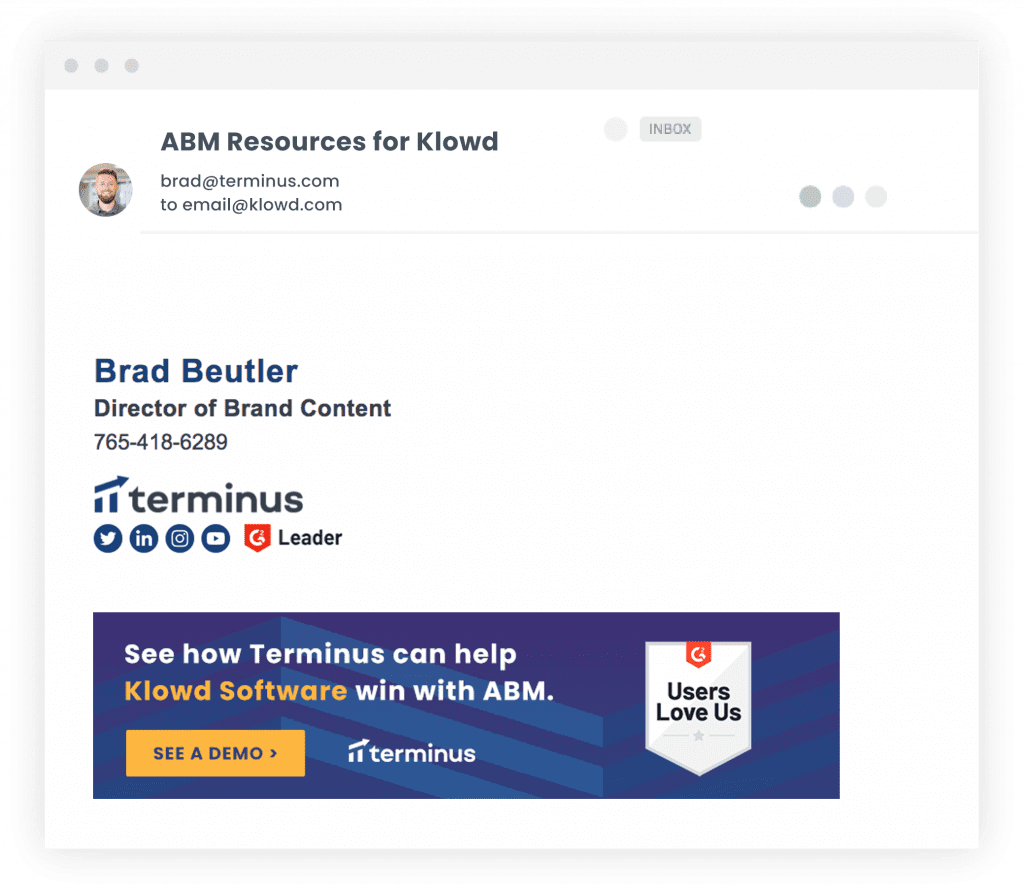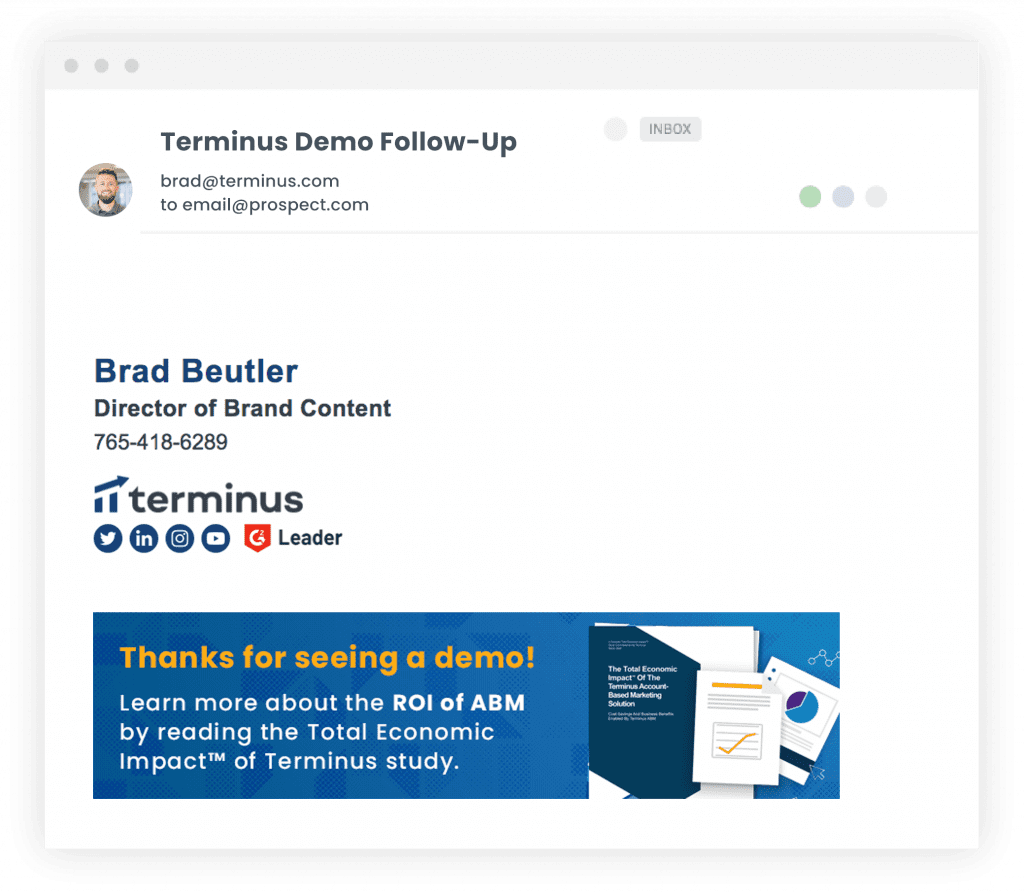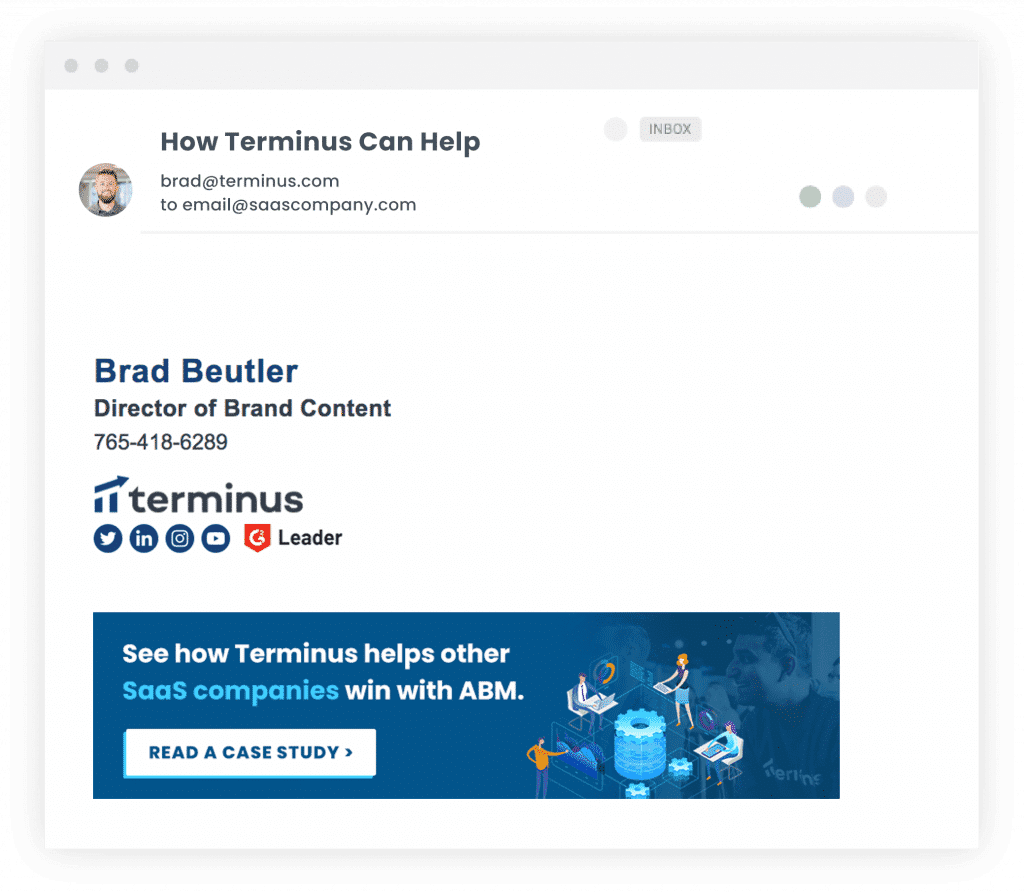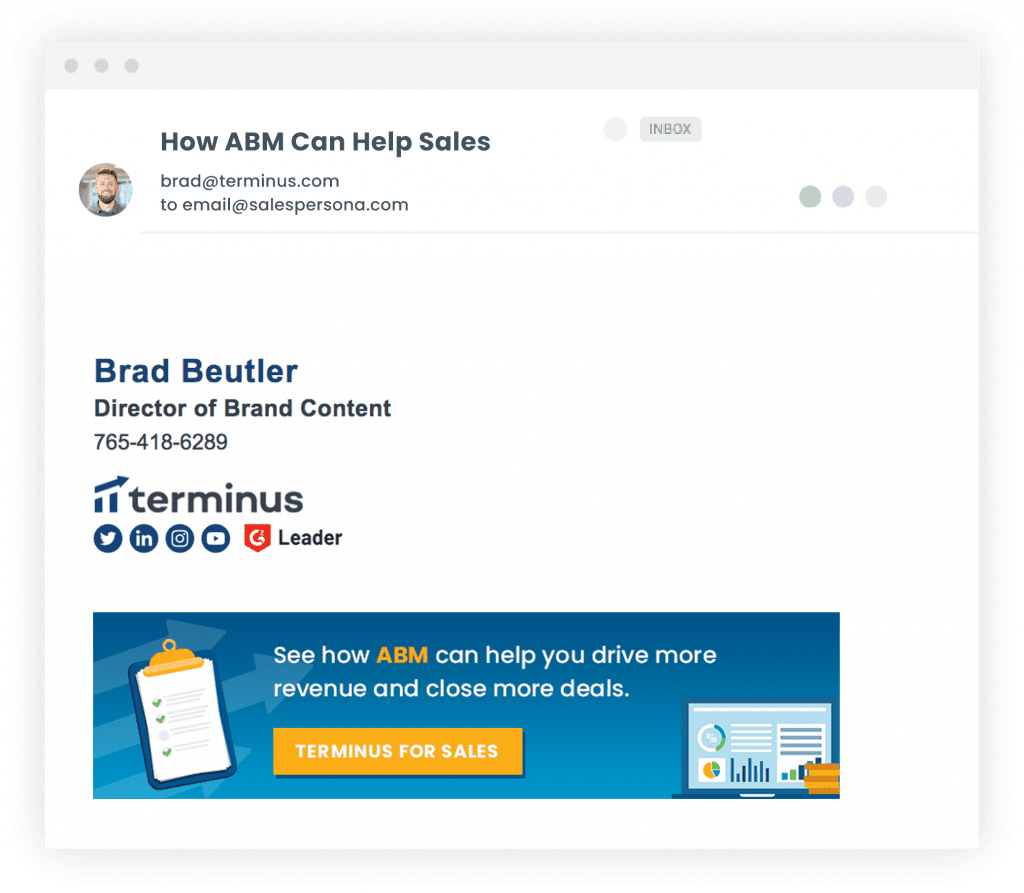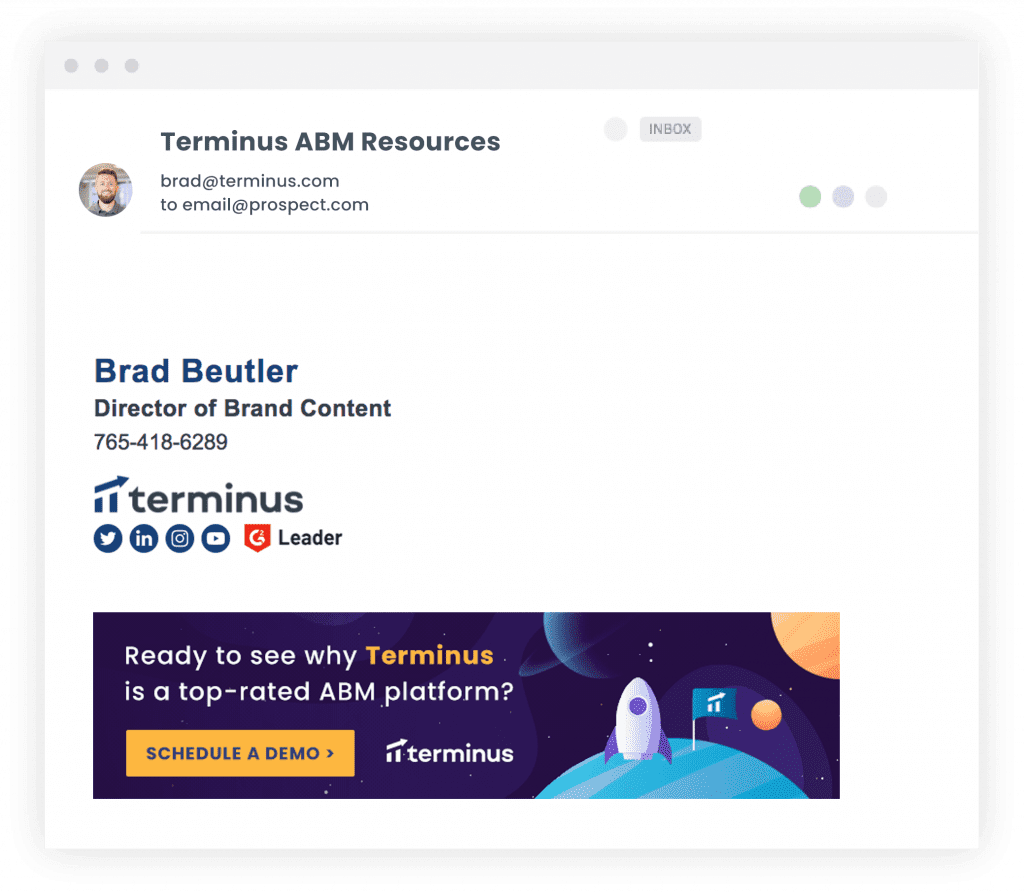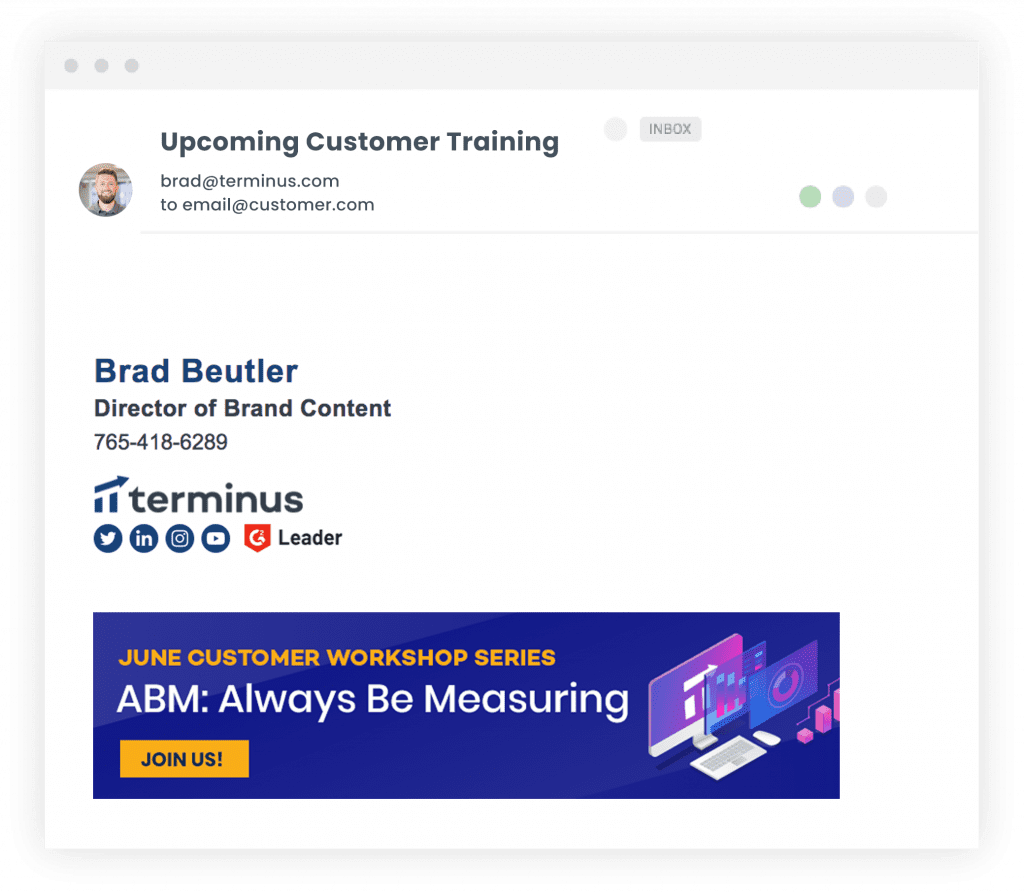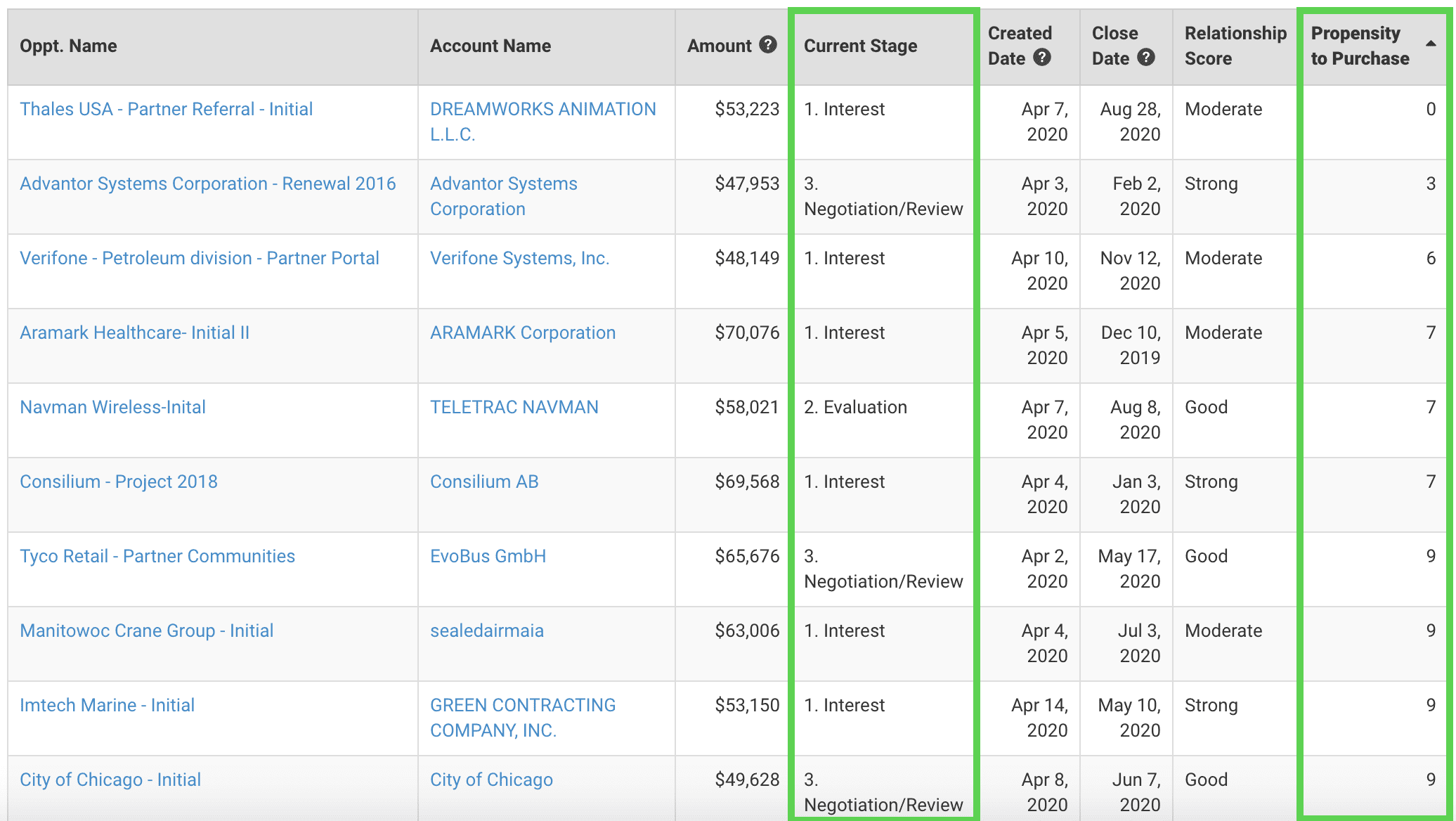“Employee email” is a term that represents the emails you and your coworkers send out of Gmail or Outlook every day to your most important prospects and customers. For some organizations, this volume amounts to hundreds of millions of emails per year. And according to HuffPost, the average American employee spends 6.3 hours in their email every day.
This high-volume, highly used channel presents a huge opportunity for your ABM strategy. How so? Targeted advertising with 100% accuracy AND a first-party source for relationship data (more on this later). Because Terminus Email recognizes the sender and recipient of every email, each new message sent or received by your team becomes a new data point and opportunity for meaningful engagement.
With Terminus Email, ABM teams can assign specific email signature banners to their target audiences (think of these banners as targeted ads, but for email). Whether it be by account, sales stage, industry, or even persona, there are many ABM use cases for this functionality. It allows sales and marketing teams to utilize something they were already doing (sending email to their most important audiences) and turn it into a strategic channel for their ABM program.
Here are a few examples of how the Terminus team uses employee email for account based marketing:
Account-Specific
Of all the use cases included in this blog post, we use this type of targeting the most. Why? First of all, it’s the purest form of account based marketing a team can execute within this channel. Users can assign a personalized banner (hint: be sure to include the account’s company name!) and pair it with a specific email domain. For example, in the screenshot below you’ll find a composed email to the “@klowd.com” domain. So anytime a Terminus team member sends an email to Klowd Software, the banner within their email signature will automatically update to what you see below.
Second of all, we use this functionality a lot ourselves because it works! After adding up the numbers across our 400+ account-specific banners, we found that the average click-through rate was five times higher compared to all other types of targeting.
Staged-Based
No matter how you structure your sales stages or Salesforce opportunity stages, time-sensitive targeting allows your sales team to wow a customer or prospect with every account based marketing email sent. If your team is focused on pipeline acceleration, this use case is for you.
Just like the example before this, it comes down to a customized banner and target list. But this time users use smart or static lists from their marketing automation platform. So as your accounts progress from one stage to another, the targeting rules update and a new banner appears. For example, after running a demo for a top target account, our sales team will move the account to the “demo complete” stage so this banner below can appear in their follow-up email.
Industry
Do any of your top target accounts fall into the same industry or vertical? If you don’t have the time or resources to set up individual one-to-one targeting for each company, industry-specific messaging can be the next best thing. In this example, we target any B2B SaaS target accounts with this specific messaging.
Persona
Instead of targeting by industry, maybe it makes more sense to target by contact characteristics. Or maybe you’d like to set up relevant messaging for each decision maker within a target account? Either way, the same logic applies to persona-based targeting with this channel. In this example, we set up a “Sales Persona” target list and paired it up with a banner that promotes ABM resources specifically for sales teams. Relevant content delivered to the right audience is a key ingredient to account based marketing success.
Competitive
There’s nothing wrong with a little competition, right? If any of your target accounts happen to be customers of your competition, you need a way to stand out and show them you want their business. Employee email is a perfect channel for this. We suggest an email signature banner that promotes how you’re different or any recent accolades that represent competitive advantages.
Customer Marketing
As you can see in the ABM full revenue funnel, account based marketing doesn’t just stop after the deal is won. Many teams use this approach to retain current customers or expand the account with cross-sell or upsell opportunities. During a time like this where the Terminus team is focusing on helping over selling, we use this channel to promote educational workshops or free customer training sessions.
Bonus: Relationship Data
The best part about this channel? While it’s used by ABM teams today as a new channel for engagement, at the same time it can be a source of first-party intent data that maps every relationship your team members have with buyers and stakeholders in your target accounts.
Notice we said “first-party” there – why is that important? Some providers of intent data are under increasing scrutiny for harvesting data that’s not theirs. As privacy laws like GDPR and CCPA become pervasive, it’s imperative that companies focus on sources of first-party intent data.
Relationship data is derived from the company-owned email system and it’s based on actual two-way human interaction. By analyzing the email and calendar patterns of your employees, Terminus identifies the entire universe of relationships and surfaces a “relationship score” teams can use for multiple purposes. It’s the perfect way to feed your sales and marketing teams precise data around relationship networks, strengths, weaknesses, and propensity to buy.
When starting or scaling your ABM program, it’s important to utilize all channels possible to drive meaningful engagement and measure success. With employee email, ABM teams get an owned channel where there’s no need to manage a budget for these ads. The targeting is 100% accurate and you don’t have to compete for clicks. And did we mention the part about first-party intent data teams can use to measure their relationships?
This channel has all of the ingredients to make an impact on your team’s ABM goals. So I guess the question becomes – why aren’t you using it yet? For more on the benefits of adding employee email to your ABM strategy, check out these resources.
